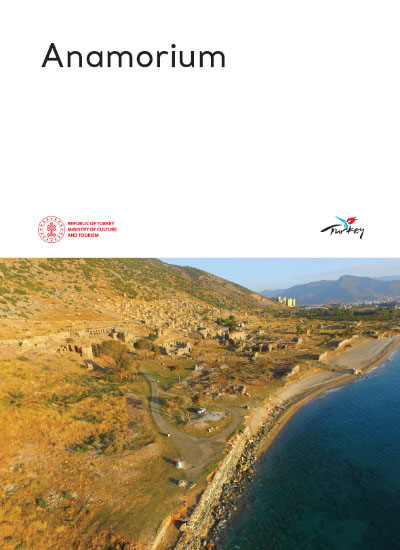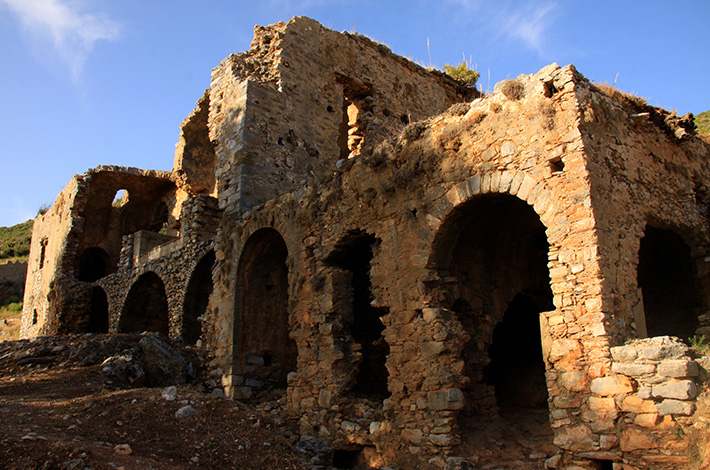Anamorium Ruins is located within the boundaries of Oren Quarter of Anamur District of Mersin Province. Both historical sources and modern research have revealed that the city was one of the most important economic and political centres of Cilicia and Anatolia throughout the Roman period. Anamorium means "Windy Nose" and it is said that the name of the city dates back to the Hittites. However, it is also said that the first known settlement in Anamorium founded in 4th Century BC. Anamorium remained under the rule of King Antiochus of Commagene until 72 AD and continued it existence under the rules of the Roman Empire until 382 AD. At the first half of the 3rd Century AD, Anamorium became a developed city as a result of peace and stability that lasted for many years. During this period, intense building activities were carried out and several theatres, odeons, basilicas, baths, aqueducts and hundreds of grave structures created. By the time of the occupation of the Parths in 260 AD, the peace period in Anamorium is unfortunately ended. During this period new defensive walls were erected in the city because of the growing unrest.
During the Byzantine period, a very different chapter started for Anamorium. Especially at the 5th and 6th centuries AD, just like all the other Byzantine cities, Anamorium became very rich. During this period, floor mosaics were added to several buildings. Unfortunately, after the great earthquake that occurred in 580 AD, most of the buildings were seriously damaged. The ancient city of Anamorium, which has been inhabited for nearly 700 years without an interruption, is one of the most important ruins of Turkey and also of the Mediterranean Region.
ODEON Odeon is one of the best preserved monumental buildings of the city and has a capacity of about 900 people. The building has four-facades and two-storeys. Odeon has 15 seat rows, an orchestra section, a stage and at the lower floor an "U" shaped vaulted gallery. The building is thought to have been built in the 2nd century AD or at the beginning of the 3rd century AD.
TETHYS MOSAIC The mosaic on the floor of the room located on the northwest of the Odeon is very important. In the centre of this mosaic is a female figure is depicted and dolphins and fishes placed around her. Because of the sea creatures around it has been suggested that the female figure in this mosaic could be Tethys. It is believed that the Tethys Mosaic was built in the second half of the 3rd century AD or in the early 4th century AD.
PUBLIC HAMMAM This bath is Anamorium’s most robust and one of the most important monumental buildings. There are 5 vaulted rooms located at the east side of the first floor. The second floor of the bath is reachable by a 30 steps ladder placed on the eastern side. Second floor of the bath consists of 12 vaulted rooms, a corridor and a large main hall. The public bath was probably built during the Late Roman Republic Period or at the Early Imperial Period.


